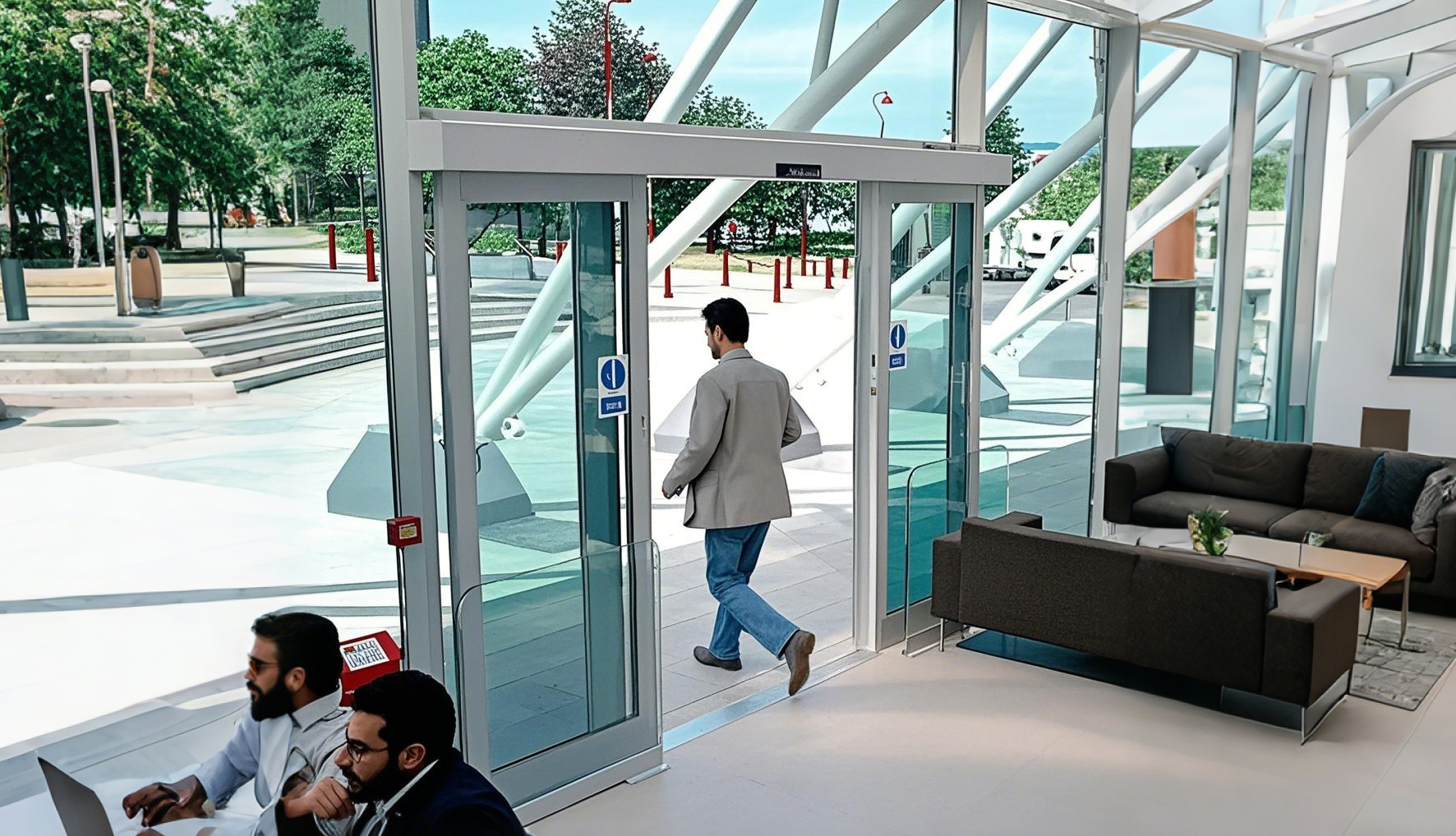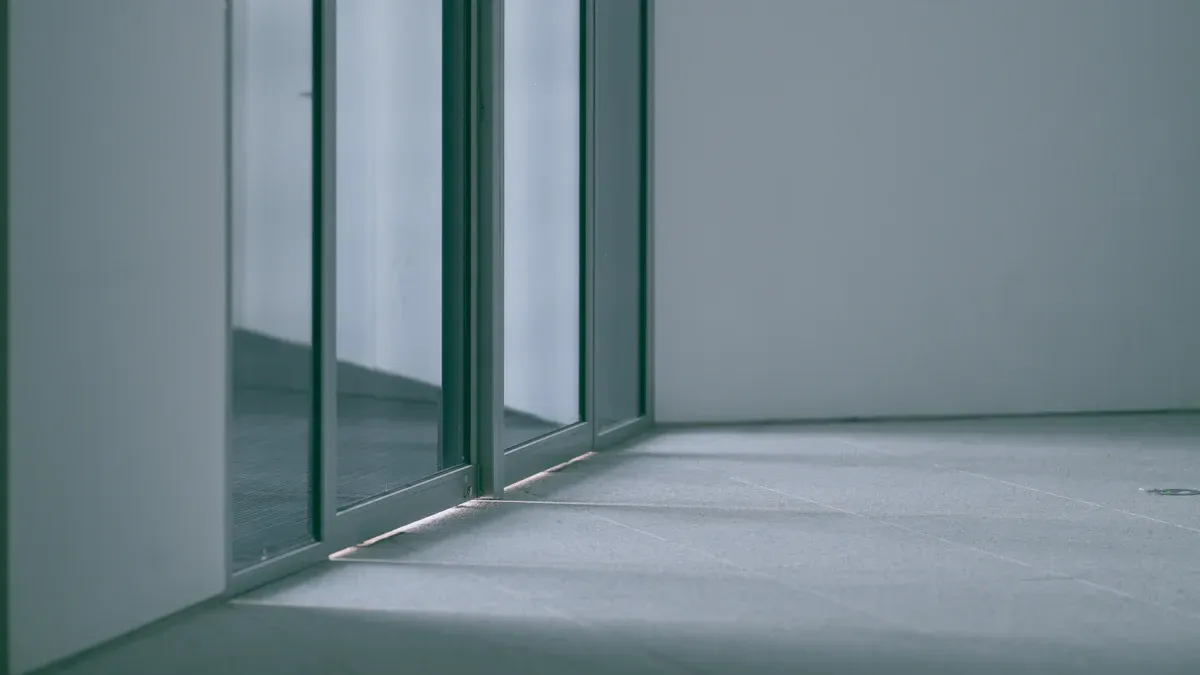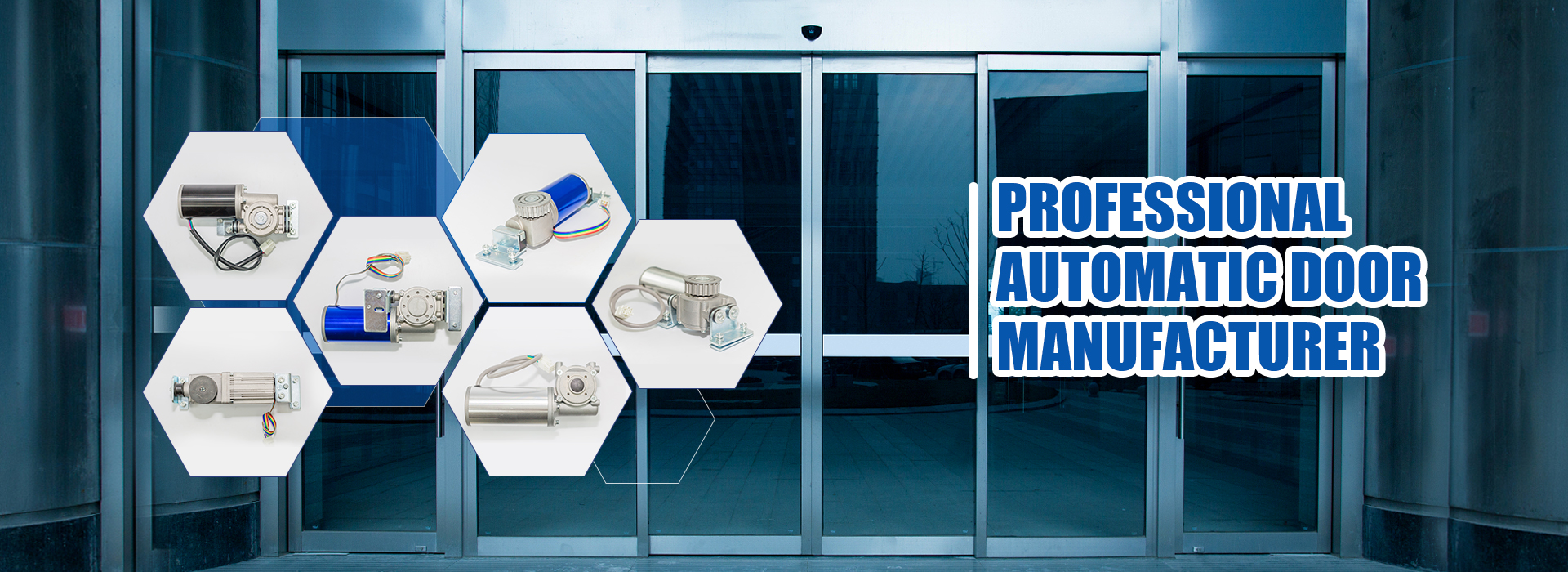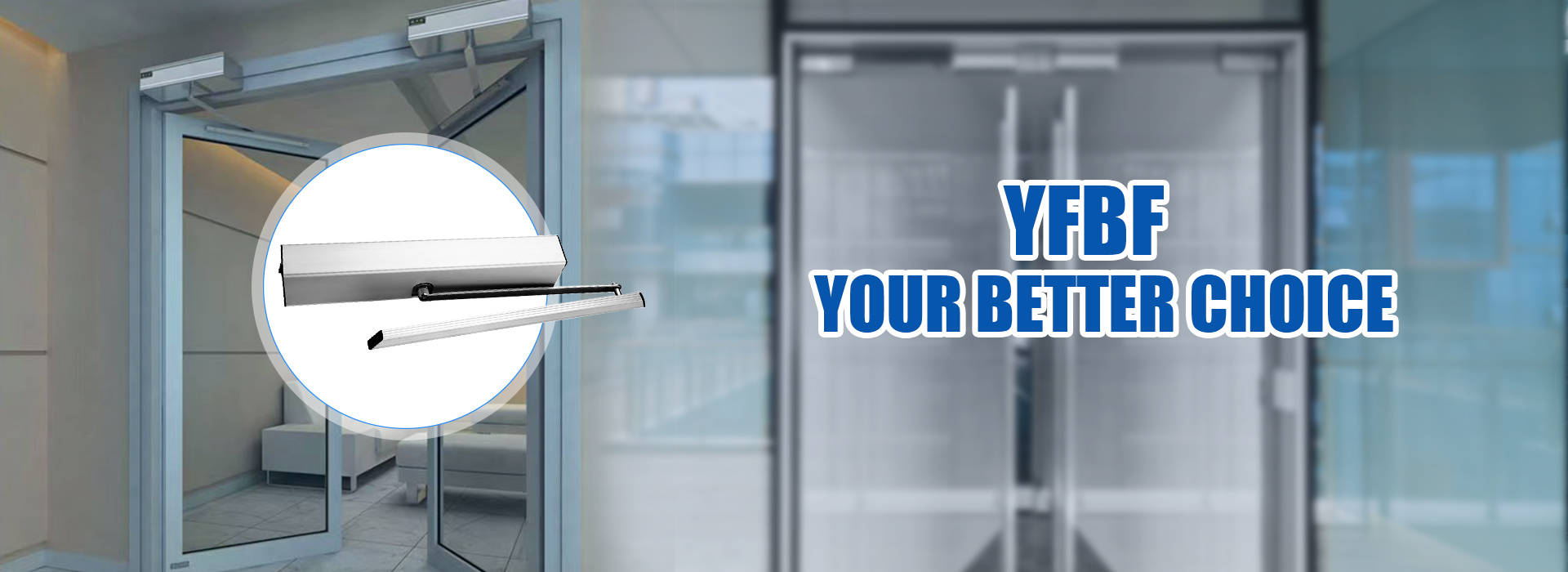
Industrial spaces often struggle with manual sliding doors that slow operations and compromise safety. Heavy-duty sliding door motors solve these problems by offering powerful performance, quiet operation, and advanced safety features. Their flexible design fits different door types, making them a game-changer for efficiency and safety in large-scale environments.
Key Takeaways
- Strong sliding door motors help work faster in big spaces.
- Safety features like obstacle sensors and slow closing prevent accidents.
- Buying sliding door motors saves money by needing less upkeep and power.
Key Features of Sliding Door Motors

Power and Durability
Sliding door motors are built to handle the demands of industrial and large-scale applications. Their robust construction ensures they can operate smoothly even under heavy loads. For example, the DC 24V Brushless Motor provides reliable performance with minimal noise, thanks to its worm gear reduction system. This design not only enhances durability but also ensures quieter operation, which is ideal for environments where noise control is essential.
Here’s a quick breakdown of the technical features that highlight their power and durability:
| Feature | Description |
|---|---|
| Motor Type | DC 24V Brushless Motor |
| Noise Level | Low noise due to worm gear reduction |
| Control Mode | Advanced PWM Pulse width control mode for reliable driving force and stable operation |
| Structure | Full enclosed structure for long service life |
| Stability | Additional reducer wheel for more stability and reduced noise |
| Material | Roller made of durable and lightweight polyurethane |
| Friction | Large space between wheels minimizes friction between the belt and wheel |
These features make sliding door motors a dependable choice for industries that prioritize longevity and consistent performance.
Advanced Technology
Modern sliding door motors incorporate cutting-edge technology to enhance functionality and user experience. Many systems now integrate with smart home technology, allowing users to control doors remotely or schedule operations. This level of convenience is especially beneficial in industrial settings where automation can save time and reduce manual effort.
Some notable advancements include:
- Energy-efficient motors that consume less power while maintaining high performance.
- Advanced access control systems for improved security.
- Sensors that detect obstacles and prevent accidents, ensuring safety for users.
- Compact and lightweight motor designs that enhance durability and reliability.
Customization Options
Sliding door motors offer a wide range of customization options to suit diverse requirements. Whether it’s for a warehouse, retail space, or residential property, these motors can be tailored to fit specific architectural styles and operational needs. For instance, users can choose from various motor sizes, control modes, and safety features to create a system that aligns perfectly with their environment.
Customization doesn’t stop at functionality. Sliding door motors can also be designed to complement the aesthetic of a space. From sleek, modern finishes to more industrial looks, there’s a solution for every setting. This flexibility ensures that businesses and homeowners alike can enjoy the benefits of a sliding door motor without compromising on style or practicality.
Benefits of Sliding Door Motors for Industrial Applications
Enhanced Efficiency
Sliding door motors revolutionize how industrial spaces operate. They eliminate the delays caused by manual door systems, allowing for faster and smoother transitions. For instance, in warehouses, these motors enable forklifts and workers to move freely without waiting for doors to open or close. This seamless operation reduces downtime and boosts productivity.
Another key advantage is their ability to integrate with automation systems. Many sliding door motors can connect to sensors or timers, ensuring doors open only when needed. This feature minimizes energy loss in temperature-controlled environments like cold storage facilities. By maintaining consistent indoor conditions, businesses save on energy costs while improving operational efficiency.
Improved Safety
Safety is a top priority in industrial settings, and sliding door motors deliver on this front. These systems often include advanced safety features like obstacle detection and controlled closing speeds. Such features prevent accidents and protect workers from injuries.
To highlight the importance of safety, consider the following statistics:
| Crash Type | Ejection Rate (%) | Ejections through Door (%) |
|---|---|---|
| Rollover | 7.62 | 0.75 |
| Non-Rollover | 0.44 | 0.10 |
| Total Non-Rollover | N/A | 23% of known routes |
These numbers emphasize how controlled door systems can reduce risks in various scenarios. Additionally, reports of injuries from sliding doors, such as bruises and minor cuts, have led manufacturers to implement safety updates. Features like warning chimes and slower door closing speeds now come standard in many models, further enhancing workplace safety.
Long-Term Cost Savings
Investing in a sliding door motor offers significant long-term savings. While the initial cost may seem high, the benefits far outweigh the expense. These motors reduce wear and tear on doors, extending their lifespan and lowering maintenance costs. Businesses also save on labor costs since automated doors require less manual intervention.
Energy efficiency is another area where sliding door motors shine. By preventing unnecessary openings and maintaining indoor temperatures, they help reduce heating and cooling expenses. Over time, these savings add up, making sliding door motors a cost-effective solution for industrial applications.
Tip: Regular maintenance, such as cleaning the motor and checking for wear, can further extend the life of your sliding door motor and maximize your investment.
Installation and Maintenance of Sliding Door Motors
Installation Process
Installing a sliding door motor might seem complicated, but it’s straightforward with the right approach. Most systems come with a detailed manual to guide users through the process. Here’s a simple breakdown:
- Prepare the Door Frame: Ensure the door frame is clean and sturdy. Remove any obstructions that might interfere with the motor or belt.
- Mount the Motor Unit: Position the motor above the sliding door. Use the provided brackets and screws to secure it firmly.
- Attach the Belt and Pulley: Connect the belt to the motor’s pulley system. Make sure it’s tight enough to prevent slipping but not so tight that it causes strain.
- Connect the Power Supply: Plug the motor into a power source. Double-check the wiring to ensure everything is connected correctly.
- Test the System: Open and close the door a few times to confirm smooth operation. Adjust the settings if needed.
Tip: If unsure about any step, consult a professional installer to avoid potential issues.
Maintenance Tips
Regular maintenance keeps a sliding door motor running smoothly for years. Here are some practical tips:
- Clean the Tracks: Dust and debris can accumulate in the tracks, causing the door to jam. Wipe them down weekly with a damp cloth.
- Lubricate Moving Parts: Apply a silicone-based lubricant to the belt and pulley system every few months. This reduces friction and prevents wear.
- Inspect the Motor: Check for unusual noises or vibrations. These could indicate loose components or the need for repairs.
- Test Safety Features: Ensure sensors and obstacle detection systems are functioning correctly. Replace faulty parts immediately.
Note: Following the manufacturer’s maintenance schedule can extend the motor’s lifespan and improve performance.
Selecting the Right Sliding Door Motor
Assessing Your Needs
Choosing the right sliding door motor starts with understanding your specific requirements. Every business has unique needs, and identifying them ensures the motor fits seamlessly into your operations. Start by evaluating how the door will be used. Is it for a high-traffic area like a warehouse or a quieter space like an office? Knowing the volume of foot traffic helps determine the motor’s durability and performance requirements.
Next, consider the available space and layout. Sliding doors come in various configurations, and the motor must align with the physical constraints of your environment. For example, compact motors work well in tight spaces, while larger systems suit expansive areas. Think about the functionality you need. Do you want automation, remote control, or advanced safety features? These factors influence the type of motor that will best serve your needs.
Finally, assess long-term value. Look at the motor’s cost-effectiveness, maintenance needs, and compliance with safety standards. Adhering to local laws and fire ratings ensures the system is safe and reliable. By addressing these criteria, businesses can make informed decisions that maximize efficiency and safety.
Comparing Models and Features
Once you’ve identified your needs, it’s time to compare sliding door motor models. Manufacturers offer a wide range of options, each with unique features. Start by looking at the motor’s power and speed. High-powered motors handle heavy doors effortlessly, while slower models suit lighter applications.
Pay attention to the control modes. Some motors use advanced technologies like pulse width modulation for smoother operation. Others integrate with smart systems, allowing remote access and automation. Safety features are equally important. Models with obstacle detection and controlled closing speeds reduce the risk of accidents.
Durability is another key factor. Motors with enclosed structures and high-quality materials last longer and require less maintenance. Compare warranties and customer reviews to gauge reliability. Finally, consider aesthetics. Modern motors come in sleek designs that blend seamlessly with different architectural styles.
By comparing these features, businesses can find a sliding door motor that meets their operational and aesthetic needs.
Heavy-duty sliding door motors simplify industrial operations. They boost efficiency, enhance safety, and save costs over time. Their reliability makes them essential for large-scale projects. Businesses can explore various models to find the perfect fit. Consulting experts ensures tailored solutions that meet unique needs.
Post time: May-20-2025



